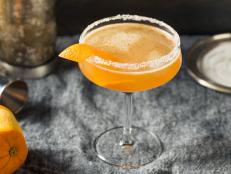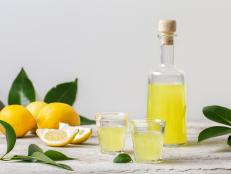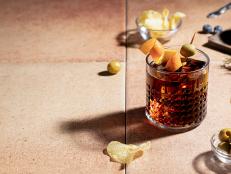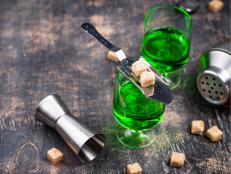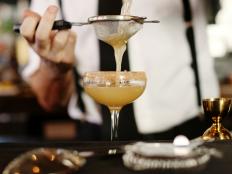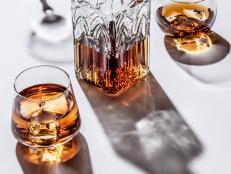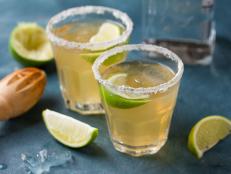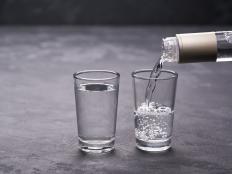Cognac vs Brandy: What’s the Difference?
All Cognacs are brandy, but not all brandy is a Cognac.

franck metois/Getty Images

Maybe you already appreciate Cognac and brandy as sipping spirits and have the snifters to match, or maybe you’ve noticed them listed as ingredients on craft cocktail menus. But what exactly is the difference? For more info, we consulted Jamie Oakes, distiller at Tamworth Distilling, a producer of craft spirits including apple brandy.
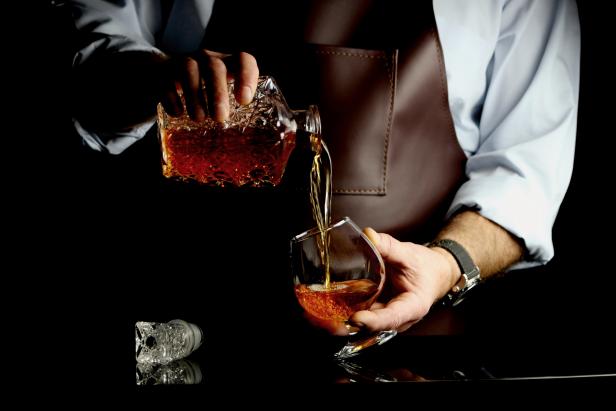
lenakorzh/Getty Images
What Is Cognac?
Cognac is a type of brandy distilled from wine made in France’s Cognac region. Cognac is twice distilled from the blends of various wines and then aged in oak casks. It can be enjoyed as an apertif, digestif or in cocktails.
“Cognac is a highly regulated grape wine, where the Appellation D'origine Controlée (AOC) dictates the quality based on four grape varietals, fermentation, distillation, maturation, blending and eventual bottling,” Oakes explains.
Cognac is often sipped neat, in a snifter or mixed into classic cocktails such as a Sidecar, Sazerac and Vieux Carré.
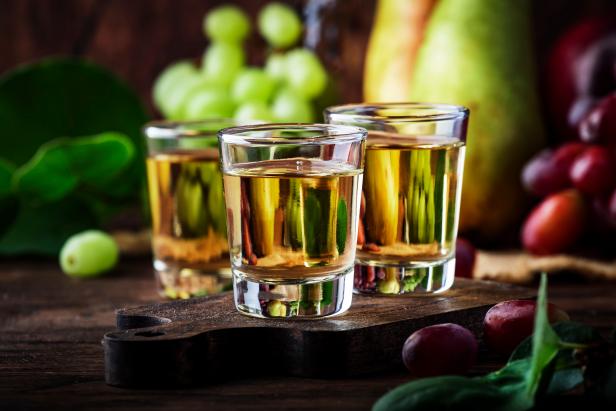
/Getty Images
What Is Brandy?
Brandy is a category of spirits made from distilled fruits. Grape brandy is distilled from white wine and aged in wooden casks (typically oak). Fruit brandy is made from fermenting fruits other than grapes, such as apple, pear, cherry, raspberry, peach or plum brandy.
“Brandy comes from the Dutch term Brandewjin, which means ‘burnt wine,’” Oakes explains. “It is a term for a grape distillate, unless another fruit is used to make the wine, such as apple brandy.” Examples of well-known fruit brandies include Calvados, an apple brandy made in Normandy, France; Framboise, a raspberry brandy from Alsace, France; and Slivovitz, a plum brandy from the Balkans and eastern Europe.
Brandy can be sipped neat (ideally in a snifter), on the rocks (ideally with a large ice cube) or mixed into drinks, like this Red Sangria or these Pear-Brandy Cocktails. For more info and brandy recipes, check out our What is Brandy guide.
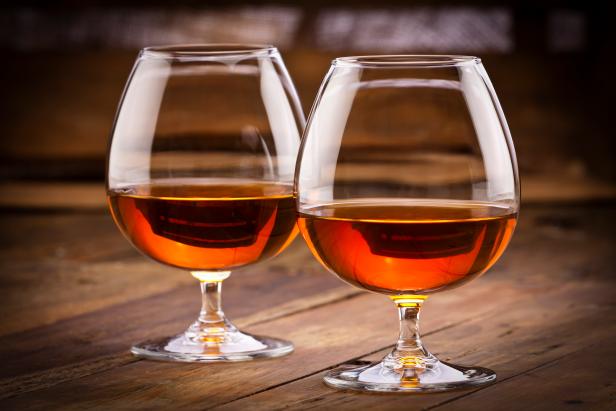
fcafotodigital/Getty Images
Cognac vs Brandy: Key Differences
In a nutshell, all Cognacs are brandy, but not all brandy is a Cognac. Brandy is a general term for a grape-based distillate that has no restrictions of grape varietals, region of production, size of capacity, aging requirements or production constraint. Cognac is a specific type of brandy and denotes a process of making it that is regulated the AOC in France.
Here, Oakes breaks down the key differences between Cognac and brandy, including ingredients, region of production, fermentation, distillation, aging and appearance.
Ingredients
Cognac must be made with specific grape varietals including Ugni Blanc, Folle Blanche, Colombard and perhaps Muscat, harvested early enough to maintain acidity (but lower sugar/alcohol potential). One distinct tradition some Cognac houses praise is the adding of clean rainwater captured to proof down or reduce the highly alcoholic spirit to something closer to bottle strength, often 80 proof.
Brandy can be made with any type of grape varietal; fruit brandies are made by fermenting fruits other than grapes and must be labelled as such, i.e. apple brandy, peach brandy or pear brandy.
Region of production
Cognac must be produced in Cognac region of France, which includes six distinct areas: Grande Champagne (considered the epicenter), Petite Champagne, Borderies, Fins Bois, Bons Bois and and Bois Ordinaires. Brandy does not have any restrictions on where it can be produced and is made all over the world.
Fermentation
Cognac must be fermented in a certain way and completed in a certain seasonal window (March 31). Brandy does not have any regulations surrounding fermentation.
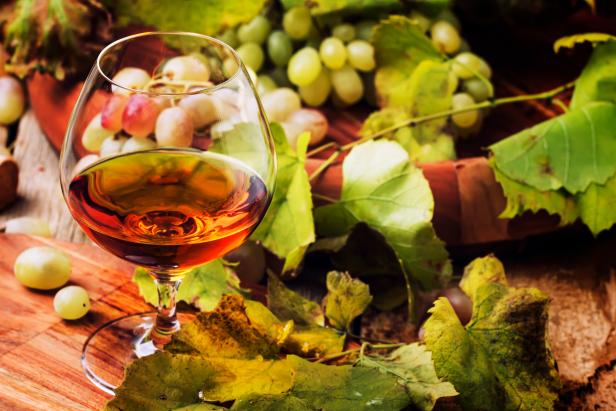
5PH/Getty Images
Distillation
Cognac is distilled slow and low, most often over an open fire in a specific copper still called a Charentais, which is a specific size, proportion and material to ensure proper quality. Cognac must be twice-distilled per regulations.
Aging
Apple and grape brandies are often aged in wood (typically oak), which imparts an amber hue. Cognac is aged in French oak, most often from a specific forest in France (Limousin). The procurement and processing of this specific oak is in and of itself a special art, science and craft. Barrels of Eau de vie are aged in particularly designed barrel cellars called Chai. The French term the process elevage or ‘barrel rearing,’ to express the upbringing of spirit, like rearing children. This includes blending and slow reduction with waters that have also aged.
Appearance
Cognac is aged in French oak and gives it a rich amber color. Apple and grape-distilled brandies are often aged in wood, including oak, which imparts an amber hue. Other varieties of brandy that aren’t aged in wood, such as eau de vie, are clear.
Related Links:
























